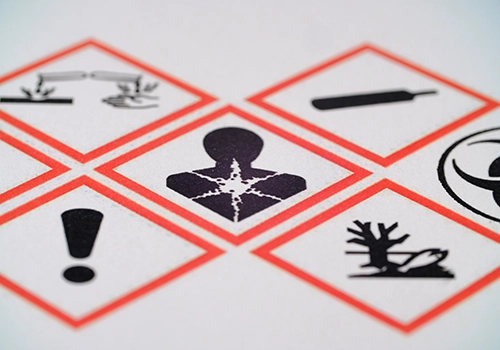Comprehensive Testing Services For Carbonyl Groups
Pace® offers environmental testing services for carbonyls, including aldehydes, ethers, ketones, and carboxylic acids. As the largest American-owned lab network, our environmental testing experts are often called in to analyze for these contaminants in water, soil, and other solids. Whether testing for compliance or to assess remediation through natural attenuation, we are here to help.

What Are Carbonyls And Carbonyl Groups?
Carbonyls are a class of organic compounds characterized by the presence of a carbonyl group, i.e., a functional group composed of a carbon atom double-bonded to an oxygen atom. (Carbonyl groups and carbonyl functional groups are often seen as interchangeable terms.)
How Are Carbonyls And Aldehydes Regulated?
In the U.S., several agencies have set regulations and guidelines designed to reduce carbonyl exposure. For example, the EPA has set limits for certain carbonyl compounds under the National Ambient Air Quality Standards (NAAQS). Under various circumstances, carbonyls may also be regulated under the Toxic Substances Control Act (TSCA), Resource Conservation and Recovery Act (RCRA), and Clean Water Act (CWA).
Additionally, the Occupational Safety and Health Administration (OSHA) has set permissible exposure limits (PELs) for carbonyl compounds in the workplace to protect workers from potential health risks. The Consumer Product Safety Commission (CPSC) also regulates the presence of carbonyls in consumer products, such as pressed wood products and textiles.

Types Of Carbonyls

Aldehydes are a common type of carbonyl compound. In an aldehyde, the carbonyl group is bonded to a hydrogen atom and an alkyl or aryl group. Aldehydes are widely used in various industrial applications, such as resins, textiles, and disinfectants.
Volatile fatty acids (VFAs) are short-chain carboxylic acids. VFAs are generated during the anaerobic digestion of organic waste and are not considered a contaminant. In fact, the generation of VFAs is part of the remediation process of organic pollutants, as it involves their degradation into smaller, less harmful compounds through natural attenuation. Analysis for VFAs can be used to validate the natural attenuation process.
Ethers are a class of organic compounds characterized by an oxygen atom bonded to two alkyl or aryl groups. Ethers are not necessarily considered pollutants but may be classified as hazardous under certain conditions.
Ketones are a class of organic compounds that are highly efficient solvents and often used to formulate products for coatings, adhesives, and ink applications. Pace® uses a variety of test methods to analyze for ketones and other Volatile Organic Compounds (VOCs).
The Dangers Of Carbonyls To Human Health
Carbonyl compounds, particularly aldehydes, have been associated with various adverse health effects in humans. Exposure to these compounds can occur through inhalation, ingestion, or dermal contact. The severity of the health risk typically depends on the duration and concentration of exposure.
Many carbonyl compounds, including aldehydes such as formaldehyde and acetaldehyde, can trigger symptoms such as coughing, wheezing, shortness of breath, and irritation of the eyes, nose, and throat. Prolonged or high-level exposure to carbonyl compounds may also worsen pre-existing respiratory conditions, such as asthma and chronic obstructive pulmonary disease (COPD).
The International Agency for Research on Cancer (IARC) has classified some carbonyl compounds as carcinogens. Long-term exposure to these compounds has been linked to an increased risk of certain types of cancer, including nasopharyngeal cancer and leukemia.
Exposure to certain carbonyl compounds has been associated with neurological effects, such as headaches, dizziness, and cognitive impairment. These symptoms are typically seen at high exposure levels and may be reversible upon cessation of exposure.
Some carbonyl compounds can cause sensitization and allergic reactions in susceptible individuals. Exposure to these compounds can result in skin rashes, hives, and contact dermatitis. In rare cases, severe allergic reactions, such as anaphylaxis, may occur. Individuals with a history of allergies or atopic conditions may be at a higher risk of developing sensitization to carbonyl compounds.

WHO WE SERVE
Carbonyls, especially aldehydes, can be found in insulation materials, composite wood products, glues, resins, and paints. Tests may be needed to ensure compliance with safety regulations and reduce health risks associated with indoor air pollution.
Since carbonyls are often found in building materials, testing is often called for in construction landfills and at demolition sites.
CERCLA/Superfund and RCRA site investigations may include carbonyls. Pace® provides testing for the presence of these compounds and their remediation through natural attenuation.
Additional Resources
Need to find a lab that can handle your unique requirements?
Contact us directly or download our list of environmental certifications across our network.